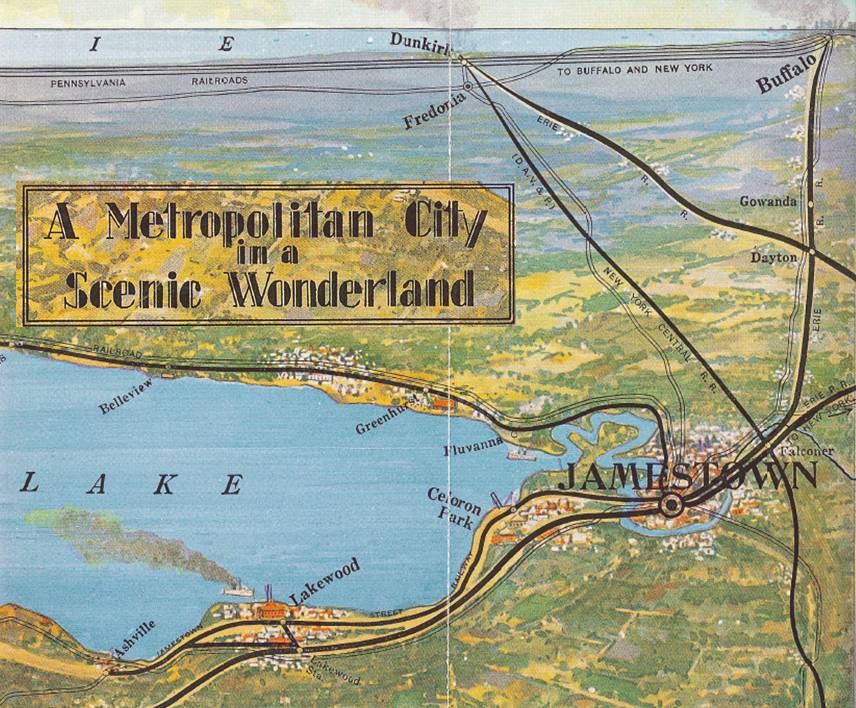“Will the last person leaving town please turn out the lights.”
Variations of this phrase have been uttered in Jamestown and many other cities during economic downtimes. Real estate agents in Seattle even paid for billboards with this message in 1971 when that city was stricken by layoffs at Boeing.
Besides creating the dramatic imagery of an outbound stampede, cliches like this mask the complexity of population change. In any city not facing some imminent catastrophe, there are four moving parts to the population equation: people moving in, people moving out, people being born and people passing away.
But most places tend to fixate on just one of these parts at a time – whichever best captures a common experience or mood. In Jamestown, it’s the “people moving out” part that gets the most attention because most families have their own out-migration stories – seeing family members, neighbors, and friends off to Texas, Nevada, Georgia, or some other greener and warmer pasture.
Because we fixate on out-migration, it’s conventional wisdom that Jamestown – and much of upstate New York – is emptying-out at an unusual rate, creating waves of refugees with flat vowel pronunciations and excellent winter driving skills.
But it isn’t true. As a report from the Federal Reserve Bank of New York demonstrated a few years ago, upstate New York doesn’t have an out-migration problem. People move out at a rate comparable to most other states. What’s unusual is our low rate of in-migration. People have been moving into Jamestown and upstate at insufficient rates to balance or overcome our normal rates of out-migration.
So we need to focus on boosting in-migration. But how can we attract new residents? After all, the region’s tepid job market has a hard time providing good jobs to local job seekers, let alone attracting people from outside.
Here, two trends are worth noting. First, more and more local employers are reporting difficulties with filling open positions. In other words, there are many good jobs that go unfilled by the local labor market, forcing businesses to go head-to-head with companies elsewhere to lure skilled workers. In this competition, the location of a job – and the lifestyles available to prospective employees – is a factor often as critical as the compensation package.
At the same time, a growing number of entrepreneurs are finding that Greater Jamestown’s low rents, reasonable cost of living, high quality of life, and access to major urban centers makes it a competitive place to operate a small business in the digital age – a good home base for working with clients from around the globe while benefitting from low overhead costs.
This combination of affordability and high quality of life is a strong message to sell – be it to engineers looking for a job, or budding small business owners – but it needs to be pitched effectively to the right audience. Right now, we’re not doing that very well.
Instead, our region’s marketing infrastructure is fragmented. Part of it is devoted to enticing tourists with information about attractions that make our region a nice place to visit and live but that aren’t decisive factors in pulling new residents into the region. And we market directly to businesses with information about available space, cheap utilities, and tax incentives – but every region touts these things, making it hard to stand out from the crowd.
What we need is a more integrated and targeted approach, one that combines tourism, business attraction, and economic development into one marketing package. And we need to hone that into a message that pays particular attention to the most mobile demographic group – the one most likely to take a chance and move here (or move back here): talented young adults.
Because they’re at a point in life with relatively few family obligations and a need to build their resumes, young adults with skills are the most likely and willing group to move around. Since they tend to delay marriage until their late 20s or 30s and have few if any kids, they tend to prefer city living that offers numerous amenities and housing more suitable to singles and small families.
Two recent initiatives are making some headway on this front. The Jamestown Up Close marketing initiative coordinated by JRC is working to highlight the stories and lifestyles of local entrepreneurs while simultaneously promoting the area to visitors. This summer, it began releasing a series of videos on its YouTube channel that conveys why ambitious people are choosing to live and work in the city. And Greater Jamestown Jobs, a group soon to be rebranded as Jamestown Young Professionals, hosts networking events to connect these individuals and help newcomers assimilate more comfortably.
This is a good start. But competition is stiff and resources are scarce. If we’re going to make a compelling case for people to move here, we need to be more skillful at selling our assets, touting progress in our city’s downtown and neighborhoods, and piecing together a message that grabs the attention of those looking to make a move.
-Peter Lombardi
This post originally appeared in The Post-Journal on November 10, 2014, as the JRC’s biweekly Renaissance Reflections feature. The illustration used in this post was taken from a 1935 Jamestown Chamber of Commerce marketing brochure.

